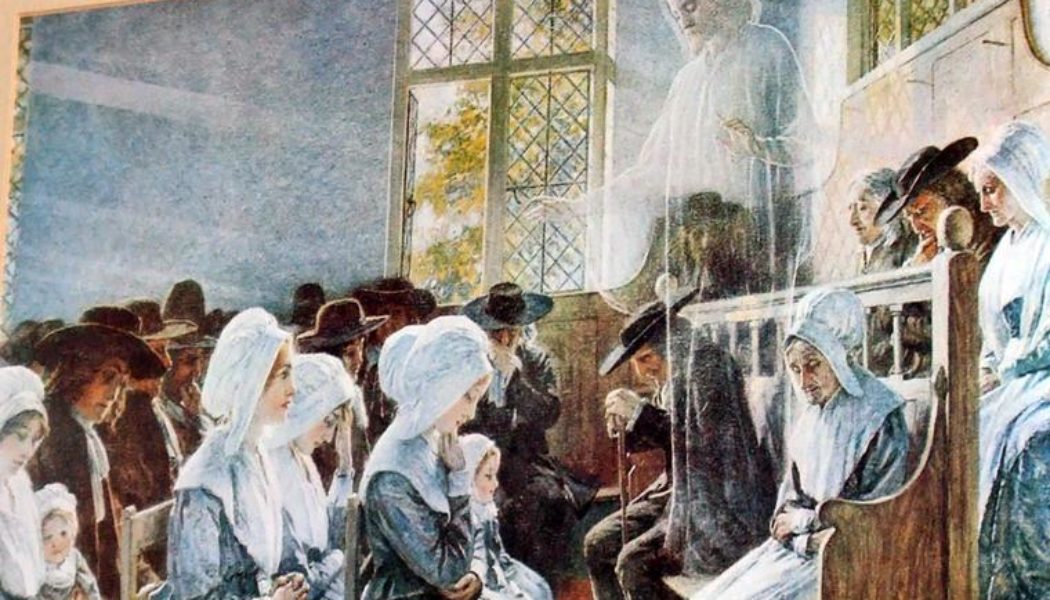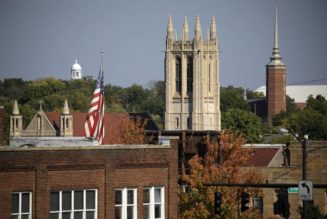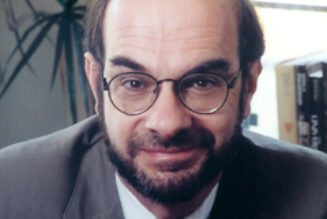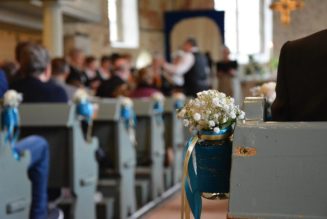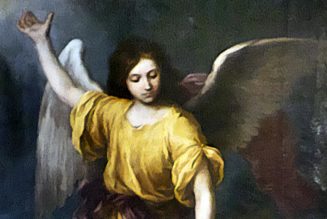
Today’s Gospel makes two major points: the need for fraternal correction and the communal context of prayer and salvation.
Jesus speaks about how to correct a brother. Before we even look at Jesus’ three-step process for fraternal correction, let’s first consider the concept of spiritual admonishment. We should consider it because it may seem alien to some modern ears.
In saying how to correct a brother who wrongs you, Jesus clearly assumes that there is right and wrong and that someone can do the latter. He also assumes that the other brother recognizes there is right and wrong and that someone is committing the latter.
It is not “judgmental” to recognize that there is right and wrong and that people do both. And it is not “judgmental” or even “hypocritical” to point that out. Rather, the Church’s tradition speaks of “spiritual works of mercy,” four of which are relevant here: “to admonish the sinner,” “to forgive injuries,” “to instruct the ignorant” and “to counsel the doubtful.”
To point out wrong to another is a good thing. God even requires it: in the First Reading, from Ezekiel, God tells the prophet that he has a responsibility to correct the sinner because, if he fails to do so, he shares the sinner’s guilt. Note that God does not say “if he succeeds in dissuading the sinner.” Everyone has free will. Some may respond to admonishment by mending their ways. Others may double-down in them. In any event, because there is right and wrong, we have a duty to help our brother to do good and avoid evil. That’s not a just a theological principle; it’s the first principle of practical reason, applicable to every human being.
(I mentioned “instructing the ignorant” and “counseling the doubtful” because sometimes people are unclear or don’t even know what is right and wrong. We live in a world that often calls evil good and vice versa. Such peoples’ responsibility may be diminished, but we likewise do not want to leave people in ignorance. That’s not loving one’s brother.)
So, admonishment of the sinner is an act of mercy. But how do we do it? Jesus offers a three step process.
First, share it between the two of you. Nobody likes to be criticized in public. Praise in public, correct in private, four eyes only. “If he listens to you, you have won your brother over.” If not, escalate.
Take “one or two others along with you.” Jesus is clearly invoking Deuteronomy 17:6, which required two or three witnesses for conviction in a capital case. (It’s why the Sanhedrin had such problems framing Jesus, because “their testimony did not agree” — Mark 14:56.)
By setting fraternal correction in a witness context, Jesus is underscoring that sin also damages the Body of Christ, especially if that sin is mortal. So, at this point, it’s not just “my word versus his word,” but a communal record, involving witnesses, is being established. Two weeks ago, Jesus entrusted St. Peter with “the keys of the Kingdom,” charging him to bind and loose, to forgive sins and to hold them bound. (Jesus repeats that formula of binding and loosing in today’s Gospel.) That is a quasi-judicial act, and so Jesus himself makes clear an offense that may exclude from the Kingdom “should be established in the testimony of two or three witnesses.”
If the sinner finds even that unpersuasive, “tell the Church.” For Jesus, the Church is clearly the tribunal of last resort: if the sinner refuses her admonishment — “If he refuses to listen even to the Church” — he is cut off. “Treat him as you would a Gentile or tax collector.”
Jesus is rich in mercy and forgiveness — forgive a brother 70 times seven times. But even God cannot forgive somebody who doesn’t want forgiveness: God doesn’t take away what somebody freely grasps, to force himself on a recipient who refuses. You should forgive him regardless, even if your forgiveness does not alter his behavior or the consequences deriving from it. Jesus does not ask us to be naïve: if a sinner persists in sin without the least sign of repentance, the Church should “treat him as you would a Gentile or tax collector.”
Is this not “loving?” No. St. Paul answers that in the Second Reading: Love fulfills the Law; it does not replace it. The Commandment of love of neighbor is the fulness of all the Commandments, but does not displace the specific norms of those Commandments. One simply does not love while adultering, killing, stealing or coveting.
At the end of the Gospel, Jesus turns his “two or three” around. “Two or three” are indispensable witnesses to admonishing against evil because what they want to bring the brother is good. To bring someone good is to love. True charity, of course, requires a state of grace: one cannot give what one does not have.
Because two or three are together for good and in the name of Jesus, he is in their midst. Love is, after all, relationship: a God who “is Love” (1 John 4:8) cannot be anything but Trinity, a communion of persons. And when we, who are made in God’s image and likeness, form our own little trinities “when two or three are gathered together in my name,” obviously he of whom they are images is “in the midst of them.”
That doesn’t mean that God does not hear us when we are alone. God — Father, Son and Holy Spirit — is certainly with us in our solitude and abandonment. Father Walter Ciszek, who spent five years in solitary confinement in a Moscow prison (and 22 in total in Soviet detention), never doubted it: his autobiography is entitled, With God in Russia.
But, as Vatican II reminds us, “God … does not make men holy and save them merely as individuals, without bond or link between one another. Rather has it pleased him to bring men together as one people, a people which acknowledges him in truth and serve him in holiness” (Lumen gentium). It pleases God because God himself is communion of persons, and we are made in that Triune God’s image.
The Church, therefore, is not an “optional extra” or “add-on” to the work of prayer, worship or sanctification. It is indipensable to it. It’s not me saying that — it’s Jesus.
That has implications across the board. “Why do I have to go to Mass?” or “I find God on the golf course on Sunday morning” are evasions denying that God is present “where two or three are gathered in my name.” (I really doubt even a golfing trio tees off “in his name”). Since God himself makes clear that his presence is particularly to be found in his community, why do we continue to pretend that, somehow, the Church dimension of our relationship to God is just a choice or an extra?
Today’s Gospel is illustrated in art by early-20th-century Irish-born painter, J. Doyle Penrose (1864-1932). “The Presence in the Midst” was painted in 1916. It depicts Christ’s spiritual appearance amid a group of Quakers during a Friends’ Meeting, their equivalent of a worship service.
All are gathered around, most with heads bowed in prayer. A little child on the left draws us, the viewer, into the picture. One woman’s head is slightly raised, looking in the direction of where Our Lord spiritually appears, perhaps sensing his presence. Our Lord stands over the congregation, in some sense transfigured (transparent — we can see a Quaker through him), his hands extended in blessing. He who is “the Light of the World” (John 8:12) blends into the light streaming through the plain glass window that would be typical of Quaker worship.
I chose this painting because it clearly illustrates the Gospel point of Christ being present “whenever two or more are gathered in his name.” That said, I recognize something of the tension in the theology. Quaker worship is not so much a community praying together as a group of friends assembled under one roof at one time. It is typically silent, except when one is moved by his “inner light” to speak up about something. In sum, it reflects the extreme of atomized individualism of Protestant worship, with its “Jesus as my personal Lord and Savior,” something that ultimately makes the Church nice but superfluous. Ultimately, that undermines what Jesus is teaching in today’s Gospel.
That said, God often writes straight with the crooked lines we give him so as to draw us — twos and threes — into that “great multitude, which no one could count” that worship the Lamb (Revelation 7:9-17).
